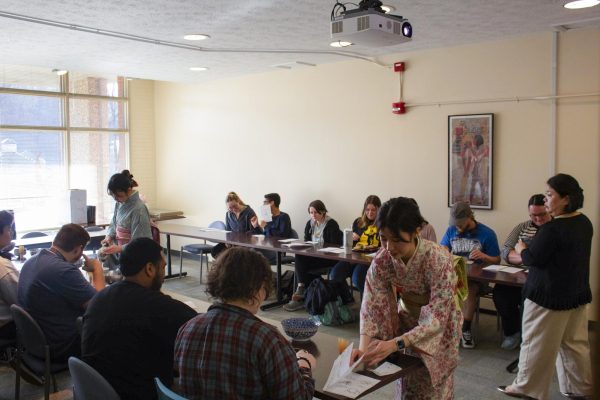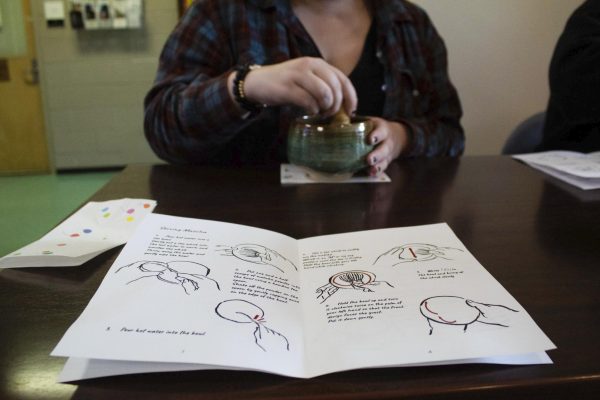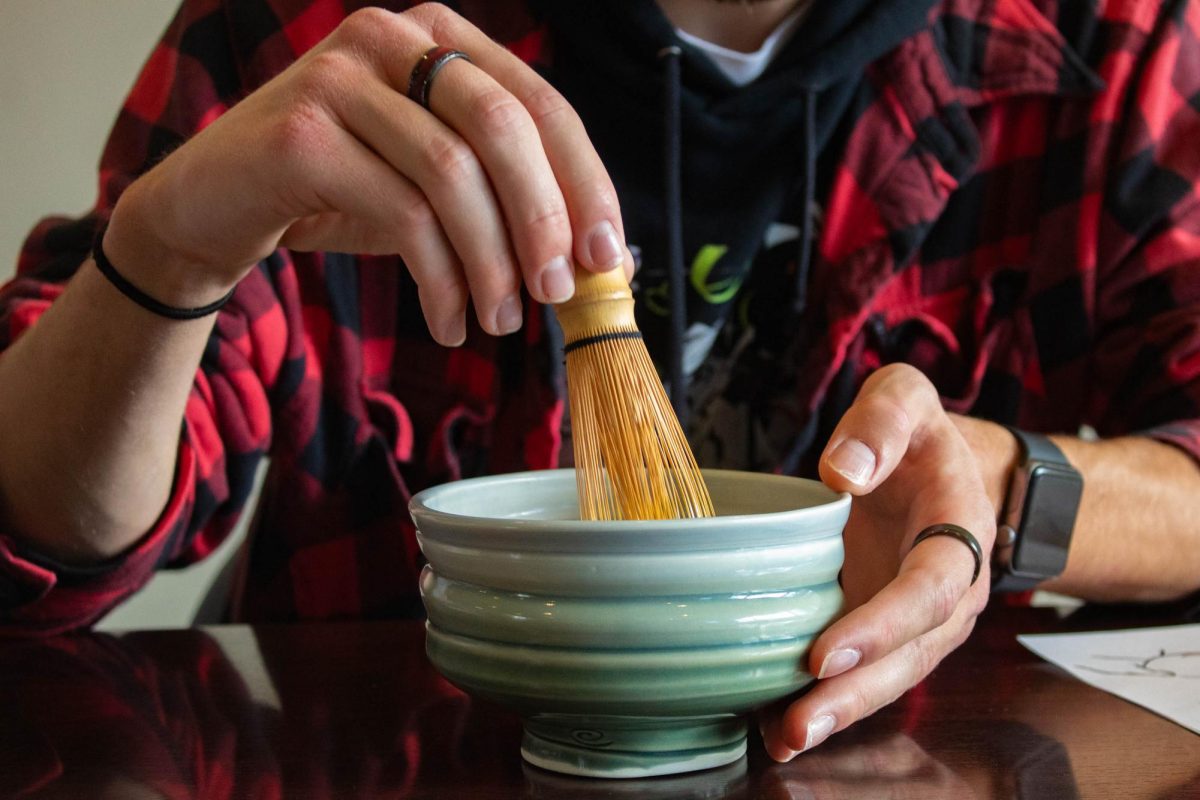Quiet students sat at a table lined with beautiful glass bowls accompanied by small wooden whisks. Some delicate napkins embossed with symbols of stars and sakura were topped with soft, round treats, decorating the table. With heads bowed, the Sado ceremony began.
In celebration of International Education Week, the Office of International Education & Development, along with the faculty of App State’s Department of Languages, Literatures & Cultures, hosted a tea ceremony on Thursday.
Sado, or “the way of tea,” is a traditional Japanese ceremony in which tea is carefully prepared and distributed to guests. This ritual incorporates the Japanese societal aspects of respect, harmony, purity and tranquility.
Swathed in kimono, students and faculty involved in the language department demonstrated the Sado practice. Attendees then watched a brief demonstration video before beginning tea preparation of their own.
Madi Langworthy, a senior languages, literatures and cultures major studying Japanese, and Nanako Hiroshima, an international teaching partner, hosted the ceremony and demonstrated for attendees.
“It’s important to be able to incorporate things that can help us learn and explore more of the world to help us grow as people,” Langworthy said.
Hiroshima organized the event, which was available to all students regardless of their major. She said it was important for all to learn about the way of Japanese life, therefore expanding the invitation beyond the language department.
“For this event, I put emphasis on harmony and respect, two important aspects of Japanese culture,” Hiroshima said.
Participants were taught how to say Japanese phrases, such as “itadakimasu,” meaning “thank you,” and “osakini,” meaning “excuse me for going ahead of you.”

(Max Sanborn )
The ceremony began with students cleaning the tea bowls with hot water. They then carefully tapped matcha into their bowls, added water, then whisked it in a V-shaped pattern until the tea was frothy.
Students on the receiving side were offered an anko cake, a small Japanese dessert filled with a sweet red bean paste, and later hand-crafted matcha. They bowed to the people who prepared it and drank with two hands, slurping when finished.
Misa Yamamoto, a senior lecturer for the Department of Languages, Literatures & Cultures, teaches Japanese classes and assisted in the facilitation of the tea ceremony, along with her students.
Yamamoto said that her students’ participation was good practice for them to apply their knowledge of Japanese culture to day-to-day situations.
“We wanted to have something where they work together and show what they know,” she said.
Theodore Swanson, a senior biology major, and Peyton Paisley, a junior risk management and insurance major participated in the tea ceremony.
Swanson studied abroad in Japan, and although he completed all the requirements for his minor, he said he was still drawn to this experience.

(Max Sanborn )
“A big part of Japanese culture, in my mind, is ambiguity,” Swanson said. “Sado is something that outlines the key components and makes it more transparent.”
As a transfer student, Paisley is taking an introductory Japanese course and came to the ceremony to expand his knowledge of Japanese practices.
“Learning how much our culture contrasts with other cultures, especially Asian cultures, is eye-opening,” Paisley said. “I’d definitely recommend anyone who’s interested in Japanese culture to do this. Anybody can learn.”


